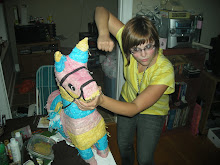I found the idea of representation vs simulation via the different stages of the screen as discussed in previous readings. The position of Representational apparatuses were characterized as requiring the body to be fixed in space, where as simulation requires a seamless blend between the physical world and the simulation through comparable scales and bodily participation.
These categories are illustrated through example in the selection. The Classical screen requires the viewer to focus on the painting or photograph. It also held the creator immobile while the object was in progress. As cinema came of age, it immobilized the viewer to a new extent, where as television was constructed to allow for interruptions and conversation between viewers. This immobilization is due in part to the "cinematic eye." This requires the viewer to put themselves in the shoes of the shot-the story is built through multiple viewpoints construct a representational space on the screen which the viewer is a part of while suspension of disbelief is taking place (the frame within a frame theory discussed in an earlier response).
But various forms of virtual reality threatened to break this representation filled world by marrying it to simulation: the panorama. viewers are placed in the central viewing area, becomes subordinate to the virtual space.
Another way the author describes representation vs simulation is a comparison to renaissance paintings as opposed to a fresco or mosaic respectively. Frescos/Mosaics are integrated with structures and become an environmental experience, where as a renaissance painting is clearly separated by the frame (or classical screen) and ask the viewer to focus directly on the painting.
This made me think back to Baudrillard's "Simulacrum and simulation" where Baudrillard discusses Disney world as a simulation whose walls are the only thing that separate the real world from fantasy. This fantasy reaffirms the existence of the real world.
Subscribe to:
Post Comments (Atom)


No comments:
Post a Comment